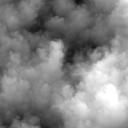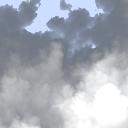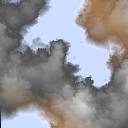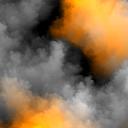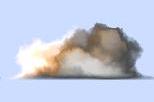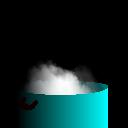experiments on Flow Noise

 Go to Ken Perlin research page,
or to his noise page.
Go to Ken Perlin research page,
or to his noise page.
 Go to Fabrice Neyret research page.
Go to Fabrice Neyret research page.
 Go to Ken Perlin flownoise page (with numerous animations).
Go to Ken Perlin flownoise page (with numerous animations).
 The Siggraph'01 technical sketches paper.
The Siggraph'01 technical sketches paper.

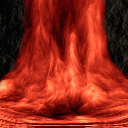
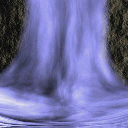
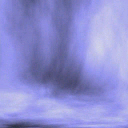
Waterfall and lava animations.
Principles: (see the paper)
- Rotation of the random vectors on the grid nodes
(cf Perlin noise Sig'85).
- Advection of the small scales by the large scales.
Basic experiments:
- Some basic rotating noise animations (without advection):
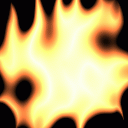
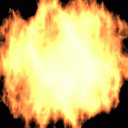

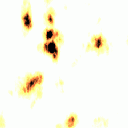
- The role of rotation:
- 1: Clouds with classical turbulent noise (i.e. t = the third dimension).
- 2: Clouds with rotating turbulent noise (no advection).
The second case only shows a `rolling' behavior.
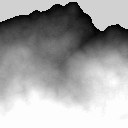
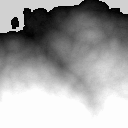
- The role of advection:
- 1: A noise without advection, whose the largest scale only is animated.
- 2: The same noise with advection.
The first example dramatically shows the drawback of adding scales
independently.
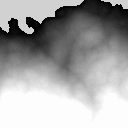
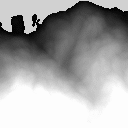
- 1: Clouds with classical turbulent noise (i.e. t = the third dimension).
- 2: Clouds with this classical noise advected

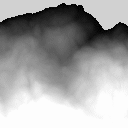
- Tuning the rotation rate:
Getting the high frequencies rotating faster or slower than low frequencies
gives very different looking fluids, all of them being interesting:
- 1: progression of 1,2,4 (i.e. increase)
of the rotation rate along frequencies looks like turbulence,
- 2: progression of 1,1,1
(i.e. constant) looks like visco-inertial flow,
- 3: progression on 1,1/2,1/4
(i.e. decrease) looks like passive foam floatting on waves.

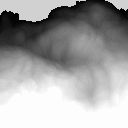
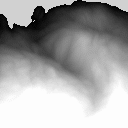
- Tuning the amount of advection:
- 1: Clouds with rotating noise and no advection.
It corresponds to very active phenomenons
like turbulence, billowing smoke,
for which high frequencies are created `on the place',
thus showing no memory
(this should be used togather with increase of rotation rate along frequencies).
- 2,3: Clouds with rotating noise and
advection, moderate or
high (i.e. too much).
It corresponds to non-turbulent phenomenons
like viscous flows, or waves gently shaking foam
(this should be used togather with decrease of rotation rate along frequencies).

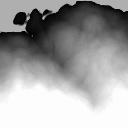
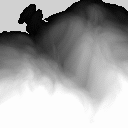
Fancy experiments:
- Chimney smoke:
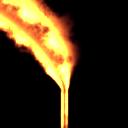
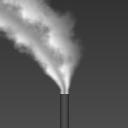
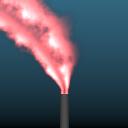
- Conservative flows:
- 1: Compressible flow (i.e. regular noise or flow noise).
- 2: Non-compressible flow (obtained by correlating the x and y noises).
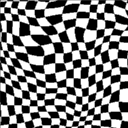
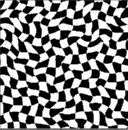
- Vortices:
- forming vortices:
the rotation rate depends on the distance to the center
(in 3,4 the smaller scales only are affected).

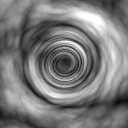
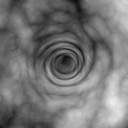
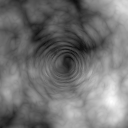
- steady vortices:
nstead, the initial rotation angle depends on the distance to the center.
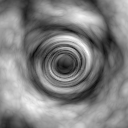
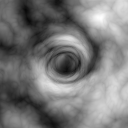
- Viscous fluids:
In this experiment,
the flow noise in added (in a small proportion)
at each time steps to the advection of the previous result (stored in a grid).
That way, the fluid shows a longer structure memory.
NB: by changing this update proportion depending on the frequency,
we can tune long memory for large scales and short memory for small
scales (see 2).


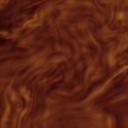
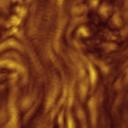
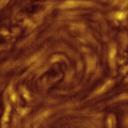
- Advanced experiments on a `reverse advection model':
In this experimental model, we reverse the scale dependency:
here, the large scales are advected by the small scales
(as if small disturbances were sucking large ones).
At this stage, it gives nice still images, but poor animations.
